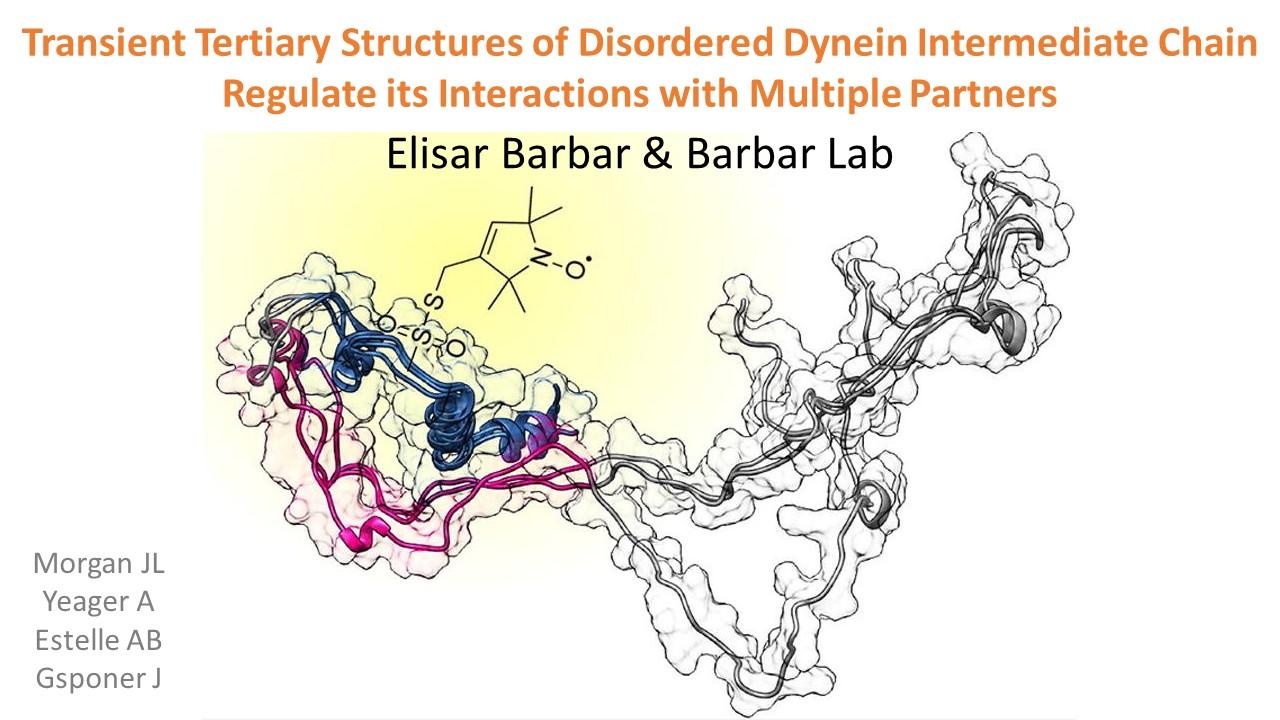Elisar Barbar & Barbar Lab
Morgan JL, Yeager A, Estelle AB, Gsponer J, Barbar E.
The N-terminal domain of dynein intermediate chain (N-IC) is central to the cytoplasmic dynein 'cargo attachment subcomplex' and regulation of motor activity. It is a prototypical intrinsically disordered protein (IDP), serving as a primarily disordered polybivalent molecular scaffold for numerous binding partners, including three dimeric dynein light chains and coiled coil domains of dynein partners dynactin p150Glued and NudE. At the very N-terminus, a 40 amino acid single alpha helix (SAH) forms the major binding site for both p150Glued and NudE, while a shorter nascent helix (H2) separated from SAH by a disordered linker, is necessary for tight binding to dynactin p150Glued but not to NudE. Here we demonstrate that transient tertiary interactions in this highly dynamic protein underlie the differences in its interactions with p150Glued and NudE. NMR paramagnetic relaxation enhancement experiments and restrained molecular dynamics simulations identify interactions between the two non-contiguous SAH and H2 helical regions, the extent of which correlates with the length and stability of H2, showing clearly that tertiary and secondary structure formation are coupled in IDPs. These interactions are significantly attenuated when N-IC is bound to NudE, suggesting that NudE binding shifts the conformational ensemble to one that is more extended and with less structure in H2. While the intrinsic disorder and flexibility in N-IC modulate its ability to serve as a binding platform for numerous partners, deviations of this protein from random-coil behavior provide a process for regulating these binding interactions and potentially the dynein motor.
